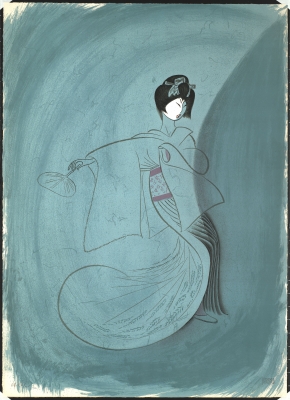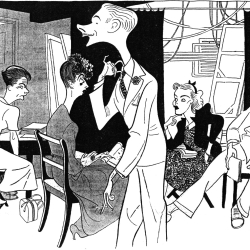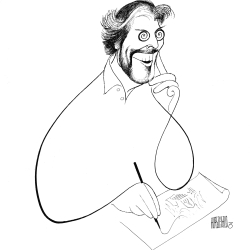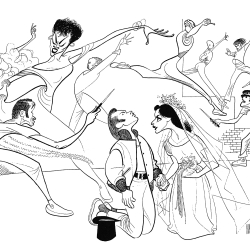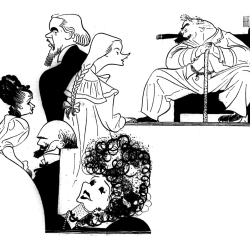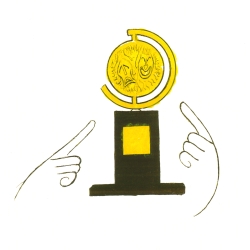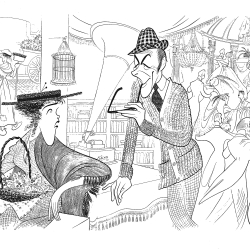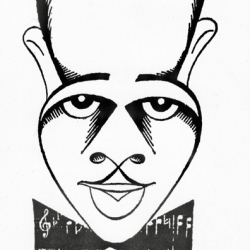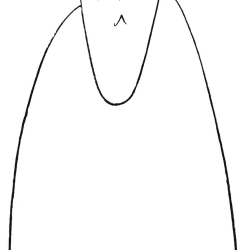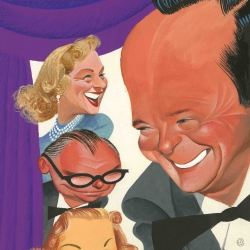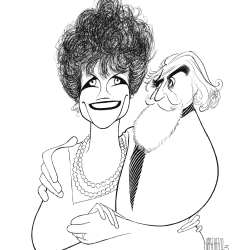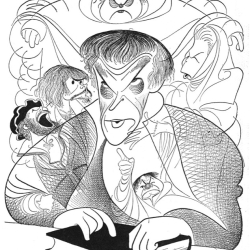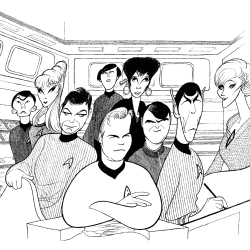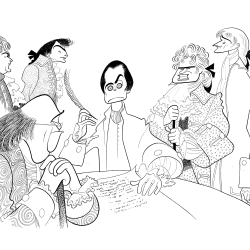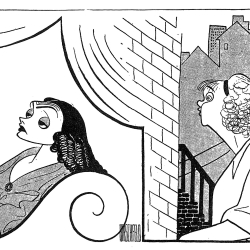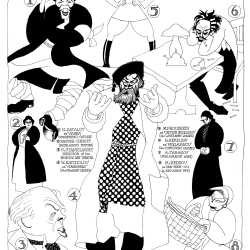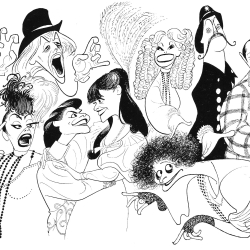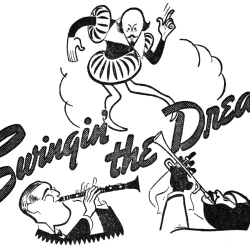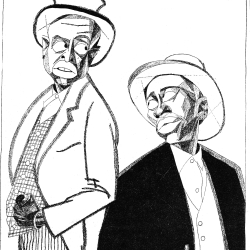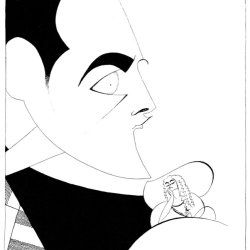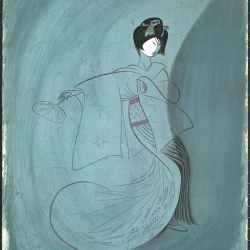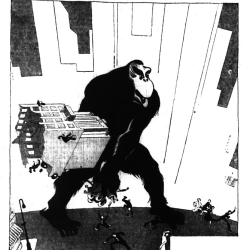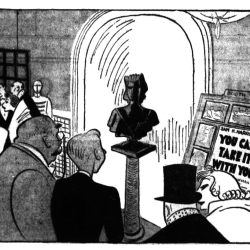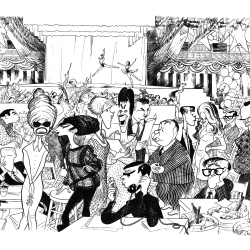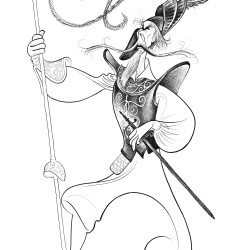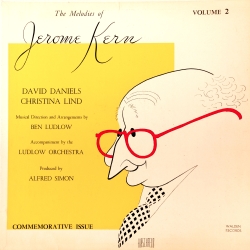The Kabuki Series
Al’s most ambitious print series came about by chance. In 1975, after a two year hiatus, Al went to Sardi’s where saw his friend, composer Harold Rome across the room. He went over to say hello and met Rome’s dinner companion, the head of Newsweek in Japan. “You’re on this side of the street instead of the other and your whole life is changed,”was how Al described it later, echoing his chance encounter with Harold Simon in 1920 that led him to Goldwyn. When the Newsweek editor asked if he’d liked to go to Japan, Al quipped that he would do it if he did not have to “give speeches or go to cocktail parties.”Thinking nothing would come of it, he was surprised two weeks later when he got a letter from a Japanese foundation inviting him over to do drawings of Noh and Kabuki theatre, “on my terms—with a chauffeur, hotel, interpreter, transportation, and the whole works. So I was in Tokyo four weeks, and if I hadn’t gone to Sardi’s that night…”In a sense, it was a homecoming for the artist. “Coming to Japan and seeing traditional theater is full circle for me, “Al said upon arrival. “My work is greatly influenced by the Japanese woodblock printers, Sharaku and Utamaro, who in turn were influenced by Kabuki. Now I am here finally drawing the theatrical forms which have had great influences on my work.”He filled his sketchbooks with images of both types of theater and when he returned to the States, he composed first a series of black and white drawings of everything from a Geisha girl to Sumo wrestlers. Working again with [George] Goodstadt and his printers, he created a suite of twelve lithographs, commonly referred to as the “Kabuki Series,”in which he interpreted many of the Japanese theater’s stock characters: Hanjo, Sukeroku, Fuji ; plays: Musume, Shibaraku, Sugawara; and styles such as the puppet theater of Bunraku. He used an abundance of color in the prints, suggesting the flat colors of the woodblock prints that he admired so much. “I’m closer to Japanese art than most Japanese,”he would say in 1977. “Most of them are influenced by the New York school, while I have been influenced by Hokusai and Utamaro. Al had drawn the Grand Kabuki when it first came to America in 1960, and on return visits in the 1970s. When he drew Tomijuro Nakamura V of the Grand Kabuki in 1979, later named as a Living National Treasures of Japan, Al signed his Friday drawing in Japanese as a tribute to the style and performer.
